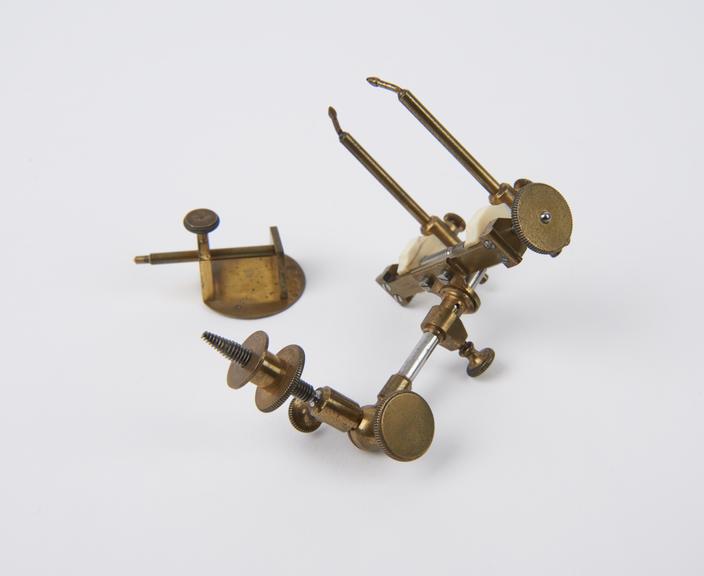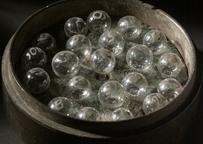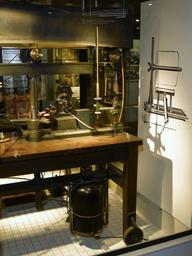

Franck exciter for attaching to the skull of dogs, Paris, France, 1888-1890
- maker:
- Charles Verdin

Franck exciter for attaching to the skull of dogs, by Charles Verdin, French, c1889
French scientific instrument maker Charles Verdin made this ‘exciter’. It is an adjustable electrode for attaching to the skull of a dog during animal experiments. It was designed by Charles Francois-Franck (1849-1921), Professor of Physiology at the Collège de France. Such physiologists were important in developing modern medicine during the late 1800s. They laid much of the foundations of today’s understanding of human biochemistry and physiology.
Animal experimentation for scientific and medical research remains controversial. One main argument is whether the benefits of animal testing outweigh the moral issues. The first organised anti-animal experiments or anti-vivisection movements were at their peak in Britain in the 1870s and 1880s. They led to tighter restrictions on who could perform experiments. However, animal experimentation remains a focus of much protest and debate.
Details
- Category:
- Laboratory Medicine
- Object Number:
- 1989-141
- Measurements:
-
overall: 56 mm x 80 mm x 60 mm,
- type:
- electrodes
- credit:
- Delehar, P.




